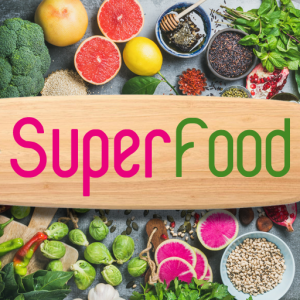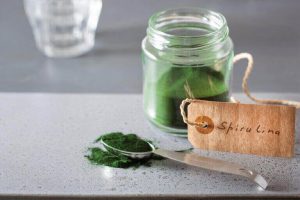The dream of Pars Algae in this article aims to introduce you to the spirulina algae and its properties. Also, to better understand the structure and application of this unique algae, we provide examples of practical cases of using spirulina algae for those interested.
The increase in the awareness of the general public has led to the attention of ultra-beneficial foods. Spirulina is one of the most promising microalgae that has been declared by the World Health Organization as “the best solution for tomorrow” and also “the best food”. The benefits and advantages of this microalgae compared to other plant food sources and other algae are many and significant.

First, what is spirulina?
Spirulina is potentially a great source of compounds that can be used to produce functional food raw materials. The use of spirulina and their metabolites has created an interesting trend in improving the value of healthy food products. Spirulina is the richest additive in terms of protein, essential fatty acids such as gammalinolenic, vitamins especially vitamin B12 and vitamin A precursor, minerals especially iron and calcium, pigments especially phycocyanin and sulfolipids. Not having a cellulose cell wall makes it much easier to absorb its nutrients. The low amount of nucleic acid (less than 4%) of spirulina is another advantage of this microalgae compared to other similar protein sources. Spirulina is a potential medicinal agent for the treatment of diseases induced by oxidative stress due to its antioxidant components and compounds such as phycocyanin, selenium, catenoids, selenium, carotenoids and gammalinolenic fatty acid.
The abundance of important biological compounds in spirulina provide new opportunities in the production of useful food products, which can be a very suitable option for enrichment with this unique algae in between meals.
Now that we have talked about the benefits of spirulina, it is better to know what spirulina is and what its structure is;
Spirulina is a microscopic filamentous cyanobacterium, and the name of this algae is derived from its spiral shape and filament.
Two genera Arthrospira and Spirulina are important edible spirulina. These two genera are different from each other in terms of morphology and they also differ in the type of rotation, the distribution of pores in the cell wall, the diameter and the type of trichome parts. and has animals. This microalgae is rich in protein, vitamins, and essential fatty acids and is commercially produced and sold in various stores as a food and medicine supplement.
Each algae alone has a length of 3 to 33 microns, which is difficult to see with the naked eye, but what is hidden in this algae is an immense power, including vital factors for life. Spirulina has a large amount of high-quality protein, including essential amino acids with High digestion coefficient, pigments such as carotenoids and phycocyanin, vitamins and minerals such as calcium and iron. Spirulina plays an important role as a food that provides health and in preventing and improving the symptoms of diseases. Spirulina is one of the oldest plants on earth, more than 3.5 billion years have passed since its birth. For months and years, it has grown in salt lakes of tropical regions from Africa to Central and South America. Since ancient times, spirulina has been used by the people living in those areas as a form of food. Although they lacked modern nutritional knowledge, but based on experience, they knew that spirulina was a food of very high nutritional value. Following the research of researchers at the French Institute, for the first time the cultivation of spirulina was started and its amazing nutritional value, high speed of digestion and high growth rate were recognized in stages. Following this research, spirulina became the subject of discussion in various international conferences such as the International Congress of Bacteriology and Applied Microbiology in 1963 and the World Food Conference by the United Nations in 1963. It is also officially recognized as a complete food by the US Food and Drug Administration.
Spirulina has been used by indigenous people since ancient times and has been researched and developed over the years and is now known to us in the world today. Now that its cultivation and mass production has become possible, the recognition of the properties of spirulina as the “ideal nutritional food” is increasing. Among several algae genera, spirulina and chlorella are particularly important due to their importance as human food and antioxidant potential. Spirulina algae are an important source of nutrients in the traditional diet of some African and Mexican populations. The chemical composition of spirulina shows that it has a high nutritional value due to a wide range of essential nutrients such as vitamins, minerals and protein. Also, the hot water extract of spirulina is used as an anticancer and antiviral agent, although the pathways through The effects of spirulina have not been well identified.
Oxidant properties
Spirulina contains basic bioactive compounds with anti-corruption and antioxidant activities, which include phenolic compounds, phycobili protein C and phycocyanin. C-phycocyanin in spirulina has been reported to have antioxidant and anti-inflammatory properties.
The antioxidant properties of phycocyanin have been attributed to radical scavenging and metal chelating activity. Antioxidants help support the body against free radicals, these are substances that neutralize free radicals or their activities. Based on expensive cancer treatment strategies, antioxidant therapy has been developed in recent years to prevent cancer. Studies have shown that free radicals can cause degenerative diseases such as cancer, aging and other age-related molecular degenerative diseases. It has been reported that spirulina extract extracted with supercritical fluid as an accessible and safe antioxidant can be an alternative to Antioxidants and synthetic antimicrobials.
Antibacterial properties
In vitro antibacterial activity and capacity to promote the growth of probiotics have been reported for spirulina. According to this report, the microbial control activities of spirulina (in a laboratory environment and in an animal model) show that the community of spirulina and probiotics can provide a new synbiotic and maintain or restore homeostasis at the level of intestinal microbiota.
Health benefits
Early interest in spirulina focused largely on its potential as a source of protein, vitamins, especially vitamin B12 and provitamin A, and essential fatty acids such as linoleic acid. Recently, more attention has been paid to the study of its therapeutic effects, which include reducing cholesterol and nephrotoxicity (toxicity of kidney cells) by heavy metals, anti-cancer properties, protection against radiation and increasing the immune system. Spirulina also has other biological activities such as antiviral, antibacterial, antifungal and antiparasitic activities. Studies conducted on spirulina show that it is safe in health cases, but the desire to eat it, probably affects the acceptance of foods that contain spirulina. Although interventional studies have confirmed the antioxidant properties of spirulina, the coordinated fluctuations of antioxidant and antioxidant responses shown in animal studies and in the laboratory environment require further confirmation in human cases. It seems that spirulina supplements are more effective on They affect natural immunity and develop the activity of natural killer cells. Spirulina has hypolipidemic (hypoglycemic) and antihypertensive properties that are useful in preventing metabolic syndrome.
A study in mice showed that spirulina increases the activity of lipoprotein lipase and insulin secretion in the pancreas. The second effect was observed in mice treated with phycocyanin isolated from spirulina and was associated with a decrease in cholesterol, triglyceride, malondialdehyde and an increase in total serum antioxidant volume; On the other hand, oral administration of an antihypertensive peptide with purified spirulina resistant to digestion by entero-gastric protease reduced systolic and diastolic blood pressure in spontaneously hypertensive rats. All these effects can be considered useful in curbing metabolic syndrome. In fact, according to the World Health Organization (WHO), high serum triglyceride level, low serum lipoprotein cholesterol level with low concentration, high blood pressure and high blood sugar are considered 4 of the 5 high risk factors for the diagnosis of metabolic syndrome.

Metabolic syndrome is associated with undetectable low-grade inflammation in clinical examinations, oxidative stress and intestinal biological disorders, and it has been proven that the intestinal microbiota can be the target of the therapeutic properties of these substances. It has been proven that the initial temporary effect on the response of peripheral cells to antigenic stimuli can be related to the anti-inflammatory effect of spirulina. However, the effects on the proliferation of cytokines and lymphocytes are different depending on age, gender and body weight differences.
Spirulina has been referred to as “food for the future” because it has the ability to produce high-quality dense food and is more efficient compared to other algae. The significant issue in spirulina is the presence of 65-71% dry weight of protein, while veal has 22% protein. Spirulina algae contains many nutrients, surrounded by minerals, pigments, rhamnose sugar (natural sugar compounds from plants), trace elements and absorbable enzymes.
The nutritional value of spirulina compared to some types of bacteria is due to the relatively low percentage of nucleic acids in it. Spirulina also contains vitamin B12 and unlike the cellulose wall of other nutritional algae, the mucoprotein cell walls of spirulina are easily digested. Spirulina is non-toxic and its fats are in the form of unsaturated fatty acids that do not contain cholesterol, so it can be used to treat arteriosclerosis and obesity.

In the end as a summary:
As we said before, spirulina is a photosynthesizing cyanophyte that is able to grow in high intensity of sunlight and very alkaline conditions and high temperature. This algae has vitamin supplements in the diet and spirulina will be introduced as a complete food source in the near future because in fact one of the most important problems in the food industry is the use of synthetic preservatives and synthetic food additives. which increases the risk of cancer. Therefore, nowadays, efforts are being made all over the world to isolate new and safe antioxidants from natural sources. Meanwhile, the natural products of cyanobacteria are an important source of new medicinal compounds. Natural products not only have medicinal value, but are also used as models for creating synthetic analogs. The chemical composition of spirulina includes protease (55-07 percent), carbohydrates (15-25 percent), essential fatty acids (11 percent), vitamins, minerals and pigments such as ketorothene, cateltrophtitol a and phycocyanin. Since there is a great potential for exploiting this algae and turning it into a food supplement in the production of food products such as cookies and biscuits, ice cream and cream cheese, it can be used as a golden key in nutrition.










